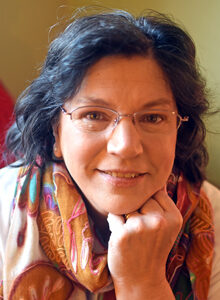Although there is little known about autism and aging, elders nonetheless need appropriate care now. Through learning about appropriate and intentional assessment and treatment, providers and allies can make a big difference, even in small ways.

Although autistic traits are seen far back in history, autism as a diagnosis was identified in the 1940s. In the 1990s, it became a special education category, which began the rise of research and access to services, mostly relating to early intervention. But what of the aging autistic population? What do these elders need? And how do we provide it appropriately?
There is a dearth of research on older autistic adults. Yet, there is a population of autistic elders (AEs) who continue to age and need appropriate care. The immediacy of this appropriate vs. aging problem suggests the need for more accurate, specialized training in how to work with AEs to influence their direction and quality of life. Unfortunately, research into provider knowledge and competence in this area demonstrates a serious lack of skills and confidence (Maddox et al., 2020.) Indeed, there seems to be a disconnect between training with ‘typical’ subjects and transferring that learning into the unique world of AEs. Inappropriately, autism is often viewed as an overlay to a typically functioning brain, although it’s an entirely different form of operating system.
While the geriatric field largely lacks specificity in treatment for the EA, their lived experience presents several current considerations. First, treatment must focus on the word “appropriate.” Indeed, lived experience indicates that many common treatments and environments are hurtful, unsafe, and inappropriate (Morgan, 2023.) When uninformed helpers provide services without understanding the different perspectives of autistic elders, what looks like common conduct is often invalidating and anxiety-provoking in a situation likely already overwhelming, confusing, and exhausting. Unrecognized masking and poor reporting bring wasted results.
As well, uninformed assessment sets in motion a host of ineffective, harmful actions. For example, seeing an elder become more aggressive or cognitively rigid than usual might be assumed to be a cognitive decline. Reviewing the AE’s ecological development leads to an understanding of sudden changes causing the elder to act out or shut down communication. Imagine if a provider immediately saw organic cognitive decline without deeper assessment and prescribed medication or referral. The assessment would be wrong, and the treatment would further confuse or upset the elder, leading to greater, long-lasting harm.
Life Experience
An elderly autistic person recently inherited money. Their friend’s death had upended their life, and they needed time to adjust. But, the paperwork and very personal information estate administrators needed caused even greater confusion. The elder, trying to regulate their changed world, stopped answering the phone, yelled at people coming to the door, and couldn’t find the documents needed. Their doctor saw this as a serious, sudden decline and reported it to elder services, who sent people out for a home check. The elder was direct and seemed quite rude, refusing to open the door. The well-meaning investigators looked in the windows, saw a mess, and left their card with a request to call. There was no contact, so helpers sent the police for a wellness check. Many different people showed up wanting things that didn’t make sense to the elder, with no one comprehensively explaining why. The more stress put on the situation, the less capable the elder appeared. They had nowhere to regulate or feel safe as the home felt “invaded.” Administrators were ready to send them to the hospital for evaluation or nursing home care.
Luckily, someone noticed that the elder was autistic, knew what that meant, and sought consultation. A different approach helped the elder to regulate and regain a sense of control. Once everyone slowed down and understood, the tension eventually eased. But it was months of (unintentional) harm by well-meaning professionals. It took a long time to recover, and the memories will linger as yet another negative influence in the elder’s world.
As the above story relates, typical, well-meaning service can complicate an autistic elders’ experience, create a highly anxious situation, and lead to lasting harm. The story demonstrates that common methods of interaction, assessment, and treatment didn’t accurately capture the needs of the AE. Providers must ally with their AEs, always presume competence, and work together to understand their lived experiences. Becoming culturally competent will lead to more accurate reporting and appropriate treatment.
Another reliable way to avoid unintentional harm and be aware of effective, appropriate treatment is to understand “intention.” Non-autistic people tend to function on schemas common to their experience and behave in automatic ways. Schemas develop gradually and largely out of awareness. They don’t require much thinking. Such “coding,” however, often bypasses intentionality. In striving to become more intentional, consider these potential barriers to appropriate treatment, as informed by AEs:
Low or No Support – Many AEs have little to no outside support. Their parents have passed, friendships were scant, to begin with or suddenly lost, and communities often disregard the old. Private pay care is expensive, and many autistic people are of a lower socioeconomic status.
Health Care Self-Efficacy – The AE is often unaware of internal body sensations like pain, hunger, and emotion. Because the AE may not be aware of decreases in muscle mass, energy levels, or hearing, they expect to do all the same things they’ve always done; they often rigidly cling to schedules, foods, and duties. When the body fails, the AE may not understand why they can’t or shouldn’t do as they’ve always done.
Aging at a More Rapid Rate – Autistic people can age at a faster pace and have poorer health outcomes (Mason et al. 2021.) Aging may also begin to accelerate more for autistic people by age 65, with aging symptoms presenting even more heterogeneously than at earlier ages (Torres et al. 2020.)
Patient/Provider Communication – AEs may not have access to or training on digital devices, so they can’t navigate patient portals. As well, telephonic communication may be highly uncomfortable and complicated by hearing problems. Processing speed needs consideration, too, as providers are often in a hurry (process fast), while the AE takes more time to put things together. Also, as autistic individuals, in general, tend to have organization challenges, AEs may need specific ways of being reminded of appointments or greater latitude for missing them.
Masking – Autistic people learn to mask at very early ages to fit in and feel safe. Consider the many environmental aspects of caregiving, such as using a consistent room, low lighting, no smells, talking more literally, and less hand movement. The more predictability the elder has, the safer they feel.
Diagnosing Instruments are not normed on autistic elders. Often, questionnaires, information sheets, and interviews are understood much differently than intended. For example, the pain-level scale of 1-10 can send the autistic brain into great discomfort as, for them, there are too many ways to interpret the question. Engaging with their ecology and perception can make all the difference.
Safety and Trust are of constant concern for the autistic person, and as they age, with body and neurological changes, that safety can easily decline. It might be important for them to attend the first few appointments with a trusted person but have a provider who still presumes the elder’s competence. This is where heterogeneity affects competence, and the more the provider knows about how to empathize with the AE, the more successful the outcome. This will take time.
Mary P. Donahue, PhD, is Psychologist / Consultant at Mindful Paths Psychological Services. For more information, email drdonahue@mindfulpaths.me.
References
Edelson, S.M., Nicholas, D.B., Stoddart, K.P. et al. Strategies for Research, Practice, and Policy for Autism in Later Life: A Report from a Think Tank on Aging and Autism. J Autism Dev Disord 51, 382–390 (2021). doi.org/10.1007/s10803-020-04514-3
Maddox BB, Crabbe S, Beidas RS, Brookman-Frazee L, Cannuscio CC, Miller JS, Nicolaidis C, Mandell DS. “I wouldn’t know where to start”: Perspectives from clinicians, agency leaders, and autistic adults on improving community mental health services for autistic adults. Autism. 2020 May;24(4):919-930. doi: 10.1177/1362361319882227. Epub 2019 Nov 1. PMID: 31674198; PMCID: PMC7192780.
Mason D, Ronald A, Ambler A, Caspi A, Houts R, Poulton R, Ramrakha S, Wertz J, Moffitt TE, Happé F. Autistic traits are associated with faster pace of aging: Evidence from the Dunedin study at age 45. Autism Res. 2021 Aug;14(8):1684-1694. doi: 10.1002/aur.2534. Epub 2021 May 27. PMID: 34042279; PMCID: PMC8328948.
Morgan, L. (2023). Unintentional Harm is Still Harm. Positive Approaches Journal, 12(3), 14-19 www.myodp.org/mod/book/view.php?id=48947&chapterid=1048
Torres EB, Caballero C, Mistry S. Aging with Autism Departs Greatly from Typical Aging. Sensors (Basel). 2020 Jan 20;20(2):572. doi: 10.3390/s20020572. PMID: 31968701; PMCID: PMC7014496.






